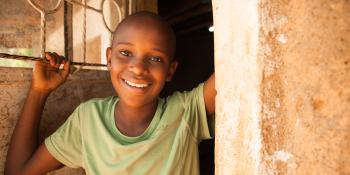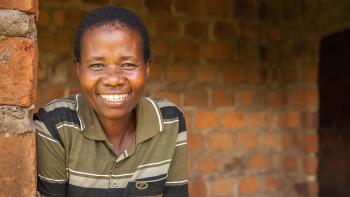
Building a market for housing microfinance
From South America to Sub-Saharan Africa
By: Sandra Prieto (Global Director Operations and Financial Inclusion, Habitat for Humanity’s Terwilliger Center for Innovation in Shelter)
I recently went to Peru, a country with a housing deficit of around 2 million units, of which 75% is a qualitative deficit.1 Self-construction and incremental building is prevalent, with minimum construction quality standards.
I was accompanied to the country by representatives of two leading African financial institutions: Kenya Women Microfinance Bank (KWFT) and Centenary Bank in Uganda. We went to visit Mibanco, a Peruvian microfinance bank, to learn from its experience with its “MiCasa” product which finances the progressive construction needs of low-income populations.
Mibanco currently has more than 100,000 active housing microfinance clients. These clients have an average loan size of US$2,500, and 66% come from low-income households, earning between US$4 to US$8 per day. Most the loans are used for the small-scale, progressive construction of client homes.
The work of Mibanco in Peru is a result of a 2009 project implemented by the Terwilliger Center, in partnership with the Inter-American Development Bank, in two countries in South America.
The visit to Mibanco was part of a peer learning exchange within a new six-year project “Building Assets, Unlocking Access” in Africa. This project is carried out by Habitat for Humanity’s Terwilliger Center for Innovation in Shelter, this time in partnership with The MasterCard Foundation.

The African project provides technical assistance to six leading financial institutions in Uganda and Kenya to develop housing microfinance products and non-financial support services for people living on less than US$5 per day. The aim is to enable these people to secure adequate and affordable housing and improve their living conditions.
It was exciting to connect these leading African financial institutions to Mibanco and facilitate this transfer of key learnings across the sector. This excitement was mirrored by the participants as well.
The representatives from Kenya Women Microfinance Bank (KWFT) and Centenary Bank did not hesitate to travel 8,000 miles to learn and witness firsthand how the housing microfinance product developed by Mibanco went from a modest pilot that barely reached 504 clients during the first year to a product that currently reaches more than 15,000 clients a month.
Today, Mibanco’s housing microfinance product represents US$3.7 million in average monthly disbursements, has a PAR lower than that of their overall portfolio (HMF PAR 3,26%, March, 2017, and the overall around 4), and according to Mibanco representatives is proving to be more profitable than its other loan products.
As we walked around the outskirts of Lima to visit some Mibanco branches and a few of their clients, I could not hide my happiness. I was witnessing how the support provided by Habitat’s Terwilliger Center to a financial institution in 2009 is now having a multiplier effect across continents.
The value of this peer exchange was clear in the learnings shared by the participants:
Veronika Karoki from KWFT said, “We have not only learned about MiCasa, but how the business is generated in Mibanco. [This] tells me that there is much more to do to take the product to scale, and we shall explore the use of mobile-based application[s] that link customers with service providers in the housing value chain.”
Robert Opobo from Centenary Bank spoke about the relevance of providing “incentives to the sales force to promote this new product, or the need to have good customer service and fast service delivery as a key to customer satisfaction and retention.” He also noted that to achieve “full impact” of any housing product, the financial institution must look at the family in a holistic way.
I feel this trip was a mission accomplished to the fullest, and that it will add great value to the early success the Building Assets, Unlocking Access project is having in Africa. The project, originally planned to reach 15,000 households, has already reached 35,000 households through housing microfinance products that KWFT, Centenary Bank, OBUL, PRIDE, and STIMA SACCO are currently implementing, with an estimated impact on over 140,000 individuals.
This is what I call “incentivizing the industry” to continue to build and expand inclusive housing markets: Do it, and do it well, and others will follow after you.
1 Data provided by the Ministry of Housing, Construction, and Sanitation. Taken from https://www.oxfordbusinessgroup.com/overview/building-demand-housing-demand-sustains-long-term-development-residential-real-estate-while-other
